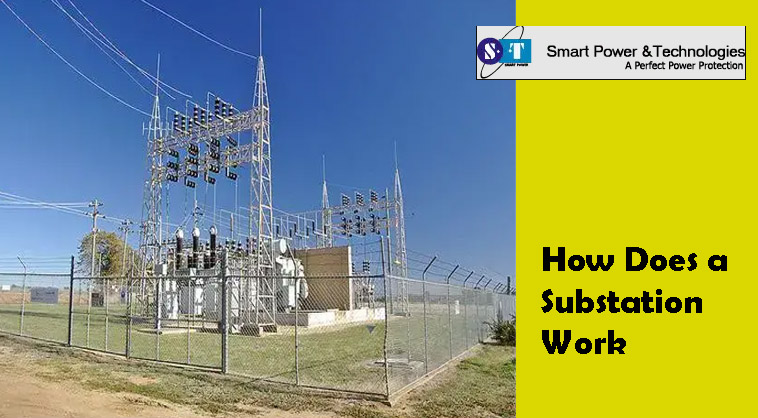The modern world runs on electricity, but getting it from the power plant to your home or business includes a lot of complicated steps and important infrastructure. A world-class piece of technology called a substation is at the center of this electrical environment. These unassuming buildings are very important for making sure that energy is safe, efficient, and ready to use as it travels and is distributed. We need to look into how substations work in order to understand how energy flows smoothly from power plants to your outlets. This article takes you on an interesting tour of substations, where we’ll talk about their functions, parts, and the important part they play in keeping our power supply stable and reliable.
What is a Substation?
A substation is an important part of the electrical grid because it acts as a hub between the power lines and helps move energy from one place to another. It’s a link between high-voltage transmission lines, which carry electricity from power plants over long distances, and low-voltage distribution lines, which bring energy to homes, businesses, and factories.
Voltage transformation, voltage regulation, and fault safety are the main things that a substation does. There are transformers in substations that change the voltage levels to make transmission or delivery safer or more efficient. They also hold the circuit breakers, switches, and safety equipment that watch over and control the flow of energy, keeping the grid safe and reliable.
A very important part of today’s electrical infrastructure is the substation, which keeps the grid stable, controls voltage levels, and stops large-scale power failures.
Components of a Substation
A substation is a complicated electrical building with many parts that all work together to make sure that energy is sent and received safely and efficiently. Some of the most important parts of a substation are:
Transformers: Substations can’t work without transformers. To meet the needs of the power grid, they can step up or step down energy levels. Step-up transformers raise the voltage so that it can be sent over long distances, and step-down transformers lower the voltage so that it can be safely distributed.
Breakers and switches: These things manage the flow of energy in the substation. Circuit breakers are very important for keeping the grid safe because they stop the flow of power when there are problems or too much demand. Switches help move energy around and separate parts that aren’t working right.
Busbars: These are the metal bars or strips that carry power inside the substation. They make it possible to connect different parts and make sure that electricity flows smoothly.
Control and Protection Systems: High-tech control and protection systems keep an eye on how the center works all the time. When there is a problem, these systems can automatically fix it, take safety steps, and keep the grid stable and reliable.
Disconnect Switches: By cutting off certain pieces of equipment or parts of the substation from the power grid, disconnect switches make upkeep and repairs safer.
Surge Arresters: These stop voltage spikes that can be caused by lightning or other outside causes, to keep the electronics in the substation from getting damaged.
Instrument Transformers: Current transformers (CTs) and voltage transformers (VTs) are used to check and record the substation’s current and voltage levels.
Control Building or Room: A lot of substations have a control building or room where workers can keep an eye on and manage how the substation works. Control panels, communication tools, and tracking screens are often built into this.
These parts work together to make sure that electricity is changed, controlled, and sent out quickly. They also protect against problems and help make the electrical grid more reliable as a whole.
How does a substation work
To fully understand the complicated path that energy takes from the power plant to your home or business, you need to know how a substation works. Substations are the most important parts of the electrical grid because they change, control, and send power to different places. This article goes into detail about how substations work, explaining what they do and how important they are for making sure that energy is safe, reliable, and ready to power our modern lives.
Changes in Voltage: Power plants usually make electricity at a high voltage so that less energy is lost when it is sent over long distances. Substations raise this voltage so that it can be sent over high-voltage wires more efficiently.
Transmission and Distribution: Power wires with high power can send electricity over long distances. When it gets to a certain area, it goes into a substation, where the power is lowered so that it can be sent to different places.
Safety and Fault Protection: Substations have safety features like circuit breakers that find faults like short circuits or overloads and turn off the power to the affected area to keep the power from going out to the whole area.
Voltage Control: Substations control voltage levels to make sure they meet the needs of nearby power grids. This keeps the electricity that goes to homes and companies safe to use.
Connectivity to the Grid: Substations allow electricity to be sent and moved across grid segments.
Conclusion
Substations are the unsung heroes of the power grid because they make sure that we always have safe, reliable energy. They are very important for changing, controlling, and safeguarding the power supply, and they are always changing as technology improves to make the grid more efficient and reliable. When you turn on a light or plug in a gadget, keep in mind that a complicated system of substations is powering your world.

